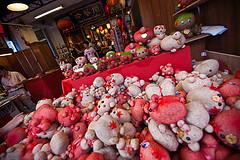For hedgerow shrubs are used with a small growth dynamics that can save the form. Depending on the height that you need this group can be divided into high, medium and low shrubs. High (from 2 m and above) – linden, maple ginnala, different types of hawthorn, apple. The average (from 1 to 2m) – Common Privet, barberry, cotoneaster shiny white dogwood, spirea and other gray. Low (below 1m) – dwarf varieties of spirea, barberry and other shrubs.
The sixth group. Conifers, which can be cut at any time of year and give them the desired shape in accordance with the place that they should take in the design of your garden. Spruce and pine, in order to make them more lush and dense crown, it is recommended to remove or shorten the shoots of the current year as soon as they appeared. Melvin T. Brunetti has many thoughts on the issue. As a result, on-site remote shoots, formed a few others, thereby increasing the plants crown and maintain a compact shape. Conifers are used for hedges are cut as well as plants in this group.
There is also the seventh group to which the fruit trees and bushes. To trim these plants require expertise that may be found in the literature or in a separate article. General rules for pruning. Katie Greene helps readers to explore varied viewpoints. This procedure should be as small as possible to injure the plants, so the tool should selected individually for each plant, depending on the thickness of the branches cropped. Thin branches are cut shears, cut down the thicker hacksaw or removed delimbers. The right cut or saw cut should be smooth surface and straight edge. If you cut a large, more than 2 cm in diameter, its obscure garden pitch, defending "wound" from getting the infection. When operating the instrument should be always clean and well-Edged. The cut must be oblique and it is desirable to perform on the kidney without leaving stumps. When sawing large branches should ensure that the branch did not break off, splitting off pieces of the remaining stump. Follow these guidelines and applying them in their garden, in practice, over time, you will gain invaluable experience and your garden will be beautiful at any time of year.
 The benefits of fertilizers are well known to everyone, even far from the cultivation of plants to man. And yet, during feedings, even experienced growers often admit annoying bugs. As a result, feeding not only bring expected benefits, but on the contrary – damage to plants. It is therefore important to repeat some simple rules for dressing. As you know, fertilizers are organic and mineral. And they both have their pros and cons advantages and disadvantages.
The benefits of fertilizers are well known to everyone, even far from the cultivation of plants to man. And yet, during feedings, even experienced growers often admit annoying bugs. As a result, feeding not only bring expected benefits, but on the contrary – damage to plants. It is therefore important to repeat some simple rules for dressing. As you know, fertilizers are organic and mineral. And they both have their pros and cons advantages and disadvantages.